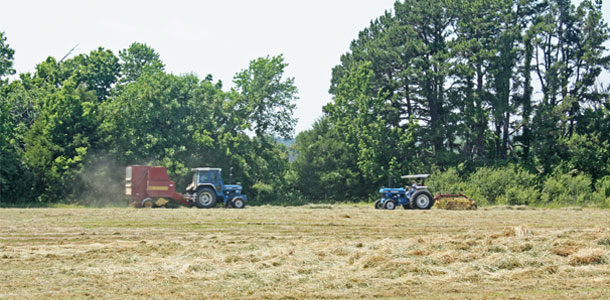Instead, how about cutting your grass hay to match grass nutrient content with nutritional needs of your livestock? Now that's a different way to look at it, isn't it? But doesn't it make sense to harvest hay that will meet the needs of your livestock and minimize your supplement costs?
We all know that protein and energy concentration declines in grass hay as plants mature and become stemmy. As this happens, the types of livestock that can be fed that hay with little or no supplements become more limited.
For example, cool-season grass hay cut at early heading often can support more than one pound of daily gain for pregnant yearling heifers all by itself. But if the same grass gets mature it won't even maintain weight of a mature cow without some protein supplements.
Of course, the type of grass you have for hay makes a difference. Cool-season grasses like fescues, orchardgrass, wheatgrasses and bromes tend to have more protein than native warm-season grasses or semi-tropical grasses, at least during first cutting. Fertilization also has an impact, particularly nitrogen effects on protein content. Nonetheless, plant maturity at harvest influences forage quality more than any other factor.
So, what should you do? First, plan what type of livestock will receive the grass hay from each field. Young livestock need high nutrient concentrations, so cut that hay before or just when heads begin to emerge. If the hay will advance to maturity, feed it to dry cows instead. Let the grass produce a bit more growth and cut it after it is well headed out, but before seeds develop.
Matching your hay harvest with your plan of use can pay handsome dividends in lower costs and less supplementing. FG
Bruce Anderson, Ph.D., is an agronomy and forage specialist for the University of Nebraska – Lincoln.










